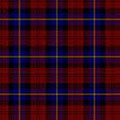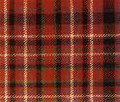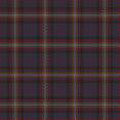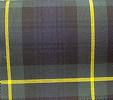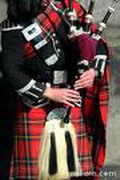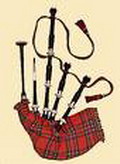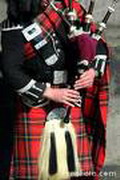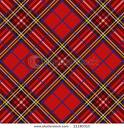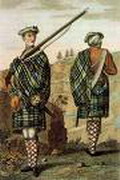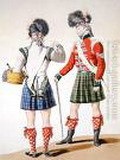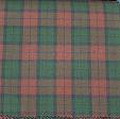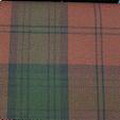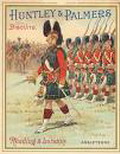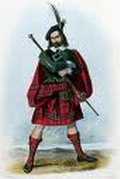6. Tartan in Ancient Times
We are not claiming that the presence of tartan designs proves Israelite
Ancestry. We are saying that tartan designs were used by Israelites in times of
old and that where we find them elsewhere in later ages then in many cases the
indications are that they who used them were also Israelites. The use of tartan
design by elements considered by us in many cases to have been of Israelite
origin is interesting. This is especially so in light of the fact that the Coat
of Joseph was also of tartan design.
Israelite Migratory Paths
The Israelites once ruled over a good portion of the Ancient Middle East.
According to conventional dating by about 720 BCE all the inhabitants of the
northern Kingdom of Israel had been exiled. These comprised ten out of the
original 12 tribes of Israel. Part of the Exiles were taken by Philistine and
Phoenician ships in Assyrian service to the west reaching Spain and from there
moving northward and across the sea to the British Isles. Other Israelites
confederated with the Cimmerians and moved to Scandinavia and through Austria
and Germany to France, Belgium, Britain, and Ireland. Another section moved to
the north into what became known as Scythia.
Some of them moved eastwards into what is now northern China before turning
westward again. Other remained in the general area once known as the USSR before
migrating to Western Europe. A portion remained where they were, converted to
Judaism and became the Khazars. This description is only a general one. The
whole process took more than 1500 years and was accompanied by movement to and
fro and the constant interchange of populations. In some cases a group would
move westwards, send a contingent back to the east which would later move
westwards again.
Tartan in the East and in Europe
In the Tarim basin in the Chinese-administered Uygur Autonomous Region are the
Uygur people. They are Muslims in religion and of mixed Mongolian-Caucasian
origin. Many of them are fair skinned and blue-eyed. In this area have been
discovered ancient burials and mummified human remains. Some of the mummies are
red-haired and large of body. In some cases their clothing bears a tartan-design.
Their artifacts show similarities to those of the Celtic centers in Europe.
Normally we would assume that they belonged to one of the Celtic groups who from
other sources we know came eastward. DNA analysis however shows the presence of
Y chromosome R1a which is associated with Slavic and Aryan Indian peoples rather
than R1b which predominates amongst "Celtic" groups in the west. It may be that
we do not know enough about DNA as we imagine and that the DNA can change
according to environmental circumstances. For the moment however that is what we
have to go on.
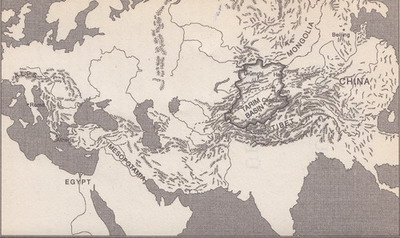
|
Dating the Findings
The mummies derive from what are known as Kurgans or burial chambers. They date
at the earliest from ca. 480-430 BCE. In some cases the dates are given as much
earlier but we think they are mistaken.
The Cherchen burials for instance were at first (based on artifacts found) dated
at ca. 100 BCE. Radiocarbon dating gave a date of ca. 4500 BCE. Even the most
radical of archaeologists however could not relate the finds to beyond the
Bronze Age and the earliest date this could be was estimated at 1500 BCE.
Similar finds at nearby Loulan were indeed dated to 1500 BCE. The only problem
however that accompanying artifacts and similar mummified remains in the area
clearly belonged to ca. 100 BCE (Elizabeth Wayland Barber, "The Mummmies of Urumchi" p.96). The remains show contacts with
the Ancient Middle East region and with the Celtic region of Western Europe. At
that time a major Celtic center was located in southern Germany and Austria.
Later (after ca. 450 BCE) it moved westward into northern Gaul and from there to
Ireland and Britain where it peaked.
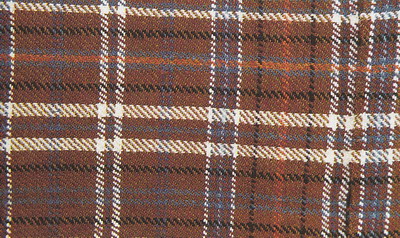
Reconstruction of Tartan Garment from Tarim Basin
Source: E.W. Barber, "The Mummies of Urumchi", 1999, Great Britain |
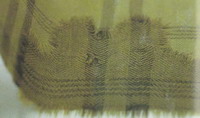
Tartan Design from Halstatt in Austria
Original colors green and brown. Weaving pattern similar to that known from Tarim Basin.
Source: E.W. Barber, "The Mummies of Urumchi" |
| Sardinia, Israel, and Ancient Scotland |
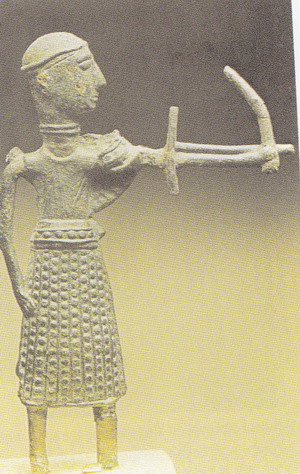 |
Archer associated with the Bronze Age Nuraghi Civilization of Sardinia.
Wears a kilt that may bear a tartan-type design. The bearers of this culture were also present in Israel
and in archaeological terms are associated with the Sea Peoples. We identified them with the Sardi from the maritime Tribe of Zebulon in Israel (Genesis 46:14). In Sardinia, they built the so-called nuraghi tower-fortresses.
In "Lost Israelite Identity" we showed architectural links between the nuraghi towers, the "notsrim" towers of Ancient Israel, and the Broch fortressess of the Pict regions in Scotland.
Source of Picture: "Titanic Titans. An Ulster Scots Cultural Odyssey" by Clifford Smyth, 2009, Belfast, Northern Ireland
|
Another article of interest,
History of the Tartan in Europe and Galicia depicts shows the tartan Kilts of two local kings of Gallacia dated from ca. the 400s BCE.
Gallacia is in Northwest Spain and that time was populated by Israelites who moved to Ireland and Britain
as we explained in our works "Lost Israelite Identity" and "Origin".
Continued on Page 5
|
